Metabolic resistance training (MRT) combines structured circuit training with progressive weights for time-efficient fat loss and muscle growth. World-renowned physique coach Gareth Sapstead explains all you need to know, as well as introducing two MRT workouts to try for yourself.
The best training approach to achieve a total-body transformation, build muscle and get lean doesn’t always fit with the time you have available. Ideally you would lift weights in a progressive manner to build muscle and strength, while following a balanced diet for sustained energy and maintaining a moderate calorie deficit diet to burn body fat. But we can’t all spend two hours a day fitting everything in. So what’s the alternative? Enter metabolic resistance training, or MRT for short.
MRT will get you great results, helping to build muscle and shed fat, while being as efficient as possible – with workouts completed in 30 minutes or less. So lace up your best gym shoes and get ready to achieve optimal results in no time at all.
What is metabolic resistance training?
MRT is a form of circuit training with progressive weights, in a way that challenges you metabolically. It’s not your typical circuit training, though, which often involves a poorly thought-out workout structure combined with sloppy exercise form. No, metabolic resistance training has structure and purpose, and that’s why it can produce fast changes in body composition while keeping you injury-free and feeling athletic.
You perform five to six exercises in sequence with minimal rest, using the same resistance device – for example the same barbell, dumbbell, or kettlebell. To make things as efficient as possible, the weight also remains the same throughout the entire circuit. That is why exercise selection and sequencing is important.
How to structure metabolic resistance training workouts
There are two ways to structure your repetitions. Option 1, which is most common, is to keep the reps the same for each exercise and throughout the circuit. For example, every exercise is done in the 6-8 rep range.
Option 2 is where you’ll vary the repetitions based on the exercise and how challenging it is for you. This helps to accommodate for the same resistance being used, and works to better apply an appropriate load to each movement. Option 2 is what we’ll be using, since it is the smarter approach and real-world tested for achieving the best results.
Considering this is a high metabolic stress technique, it’s wise to choose your exercise order carefully – we will explain how later in the article. With MRT performed correctly, with good lifting technique, your workouts will require less space, less equipment and less time.
Benefits of metabolic resistance training
- Fat loss
MRT puts a very high demand on to the anaerobic energy systems (both ATP-PC and glycolytic). Using these energy systems for repeated bouts of exercise is associated with growth hormone release and activating lipolysis, aka fat loss. - Prolonged calorie burn
Metabolic resistance training causes a lot of excessive post-exercise oxygen consumption (EPOC). Because of that your resting metabolic rate will spike and continue to burn energy even after the workout is over. This is sometimes known as the ‘afterburner effect’, and it’s crucial for any effective fat loss plan. - Muscle growth
MRT is a form of resistance exercise, so by using a routine of progressive overload you’re developing stronger bone, connective and muscle tissue. Since muscle is metabolically active tissue, that means even more fat loss. - Muscle sparing
Traditional forms of cardio exercise, when overdone, can promote unwanted muscle break-down, especially when in a caloric deficit. MRT on the other hand will have a muscle ‘sparring’ effect.
How to create a metabolic resistance training programme: five golden rules
There are a few key rules when designing a good MRT program. If you do a quick internet search, you’ll find a variety of different routines and ways to do them. But as previously stated, why settle for average styles of circuit training when we at MF can do better? So these are your new laws of MRT programming.
1. Do ‘high skill’ exercises first
Exercises should be performed in descending order, from the most technically demanding to the least demanding. You should ideally try and place the most technical exercises towards the start, where fatigue is lowest. The complexity will also depend on your movement capabilities and just how ‘complex’ it is to you. As an example, an Olympic lift variation is more complex than a front squat, which is more complex than a bent-over row or a lunge.
Placing every exercise in order of complexity is not always possible, however, when we try and follow the rest of the rules. But always start each circuit with the most complex. For the rest, if it doesn’t work in the order you’ve put it in, don’t think twice about scrapping it and trying a different order.
2. Use a non-competing exercise order
Non-competing exercises are those that don’t rely on the same muscles. The benefit of using this exercise order is simple: while one group is working, the others are resting. Given the fact that many exercises you’ll be using work multiple muscle groups all at the same time, don’t get too hung up on specifics here.
Generally, try to alternate a pushing exercise with a pulling exercise, or an upper-body movement with a lower-body movement. Or if you have two lower-body exercises back-to-back, make one more knee-dominant (e.g. Bulgarian split squats) and one that works your hips more (e.g. Romanian deadlifts).
3. Select a weight based on your weakest exercise
MRT circuits should be relatively short. The entire appeal is that they’re brutally effective but brief. By imposing a 10-rep max weight limit – based on your weakest exercise – in a circuit, you ensure that you will never go above 6-8 reps, which allows form to stay tight and effort to remain high.
For example, if a barbell overhead press is your weakest exercise in the circuit, choose a weight that is no heavier than what you can press for 10 reps.
4. Set rep ranges rather than specific rep goals
There seems to be an unwritten rule in circuit training that every exercise needs to be done for the same amount of reps or for the same amount of time. Instead, you should set rep ranges (e.g. 8-10) versus specific reps (e.g. 10) to provide a suitable challenge for every exercise in your circuit.
By sticking with the same weight throughout, it only makes sense that the reps have some flexibility.
5. Do not set the weight down for longer than 15 seconds
You can complete each exercise without ever letting the weight touch the floor. Or, you can put it down and reset every time. It makes no real difference, although if grip is an issue or your technique gets sloppy, then a 15-second reset between exercises would be a smart move.
How to get started with metabolic resistance training
Select your exercises based on the above rules, making sure that you’re using no more than your 10-rep-max for your weakest exercise.
Next, test the absolute maximum reps you’re able to achieve with the same weight on each exercise. These can be your warm-up sets, before doing your actual working sets with challenging weights and reps.
Program your reps for each exercise based on your test. Pick a target that leaves a little in the tank. If my max reps were a 10 out of 10 for effort, then I want to pick around a 5 or 6 out of 10. Remember, MRT is about lifting with purpose, good time under tension and good form. It’s not just about moving the weight and counting your reps, so keep your weight high and reps low.
Try the below routines out for yourself. If they flow well, are challenging you to the right level, and above all feel good for your body, then add them to your roster of weekly workouts.
Try these metabolic resistance training workouts
Barbell MRT workout
- Complete all exercises back-to-back with less than 15 seconds rest between each
- Rest for 2 minutes at the end of each circuit
- Repeat up to 3-5 times for your full workout
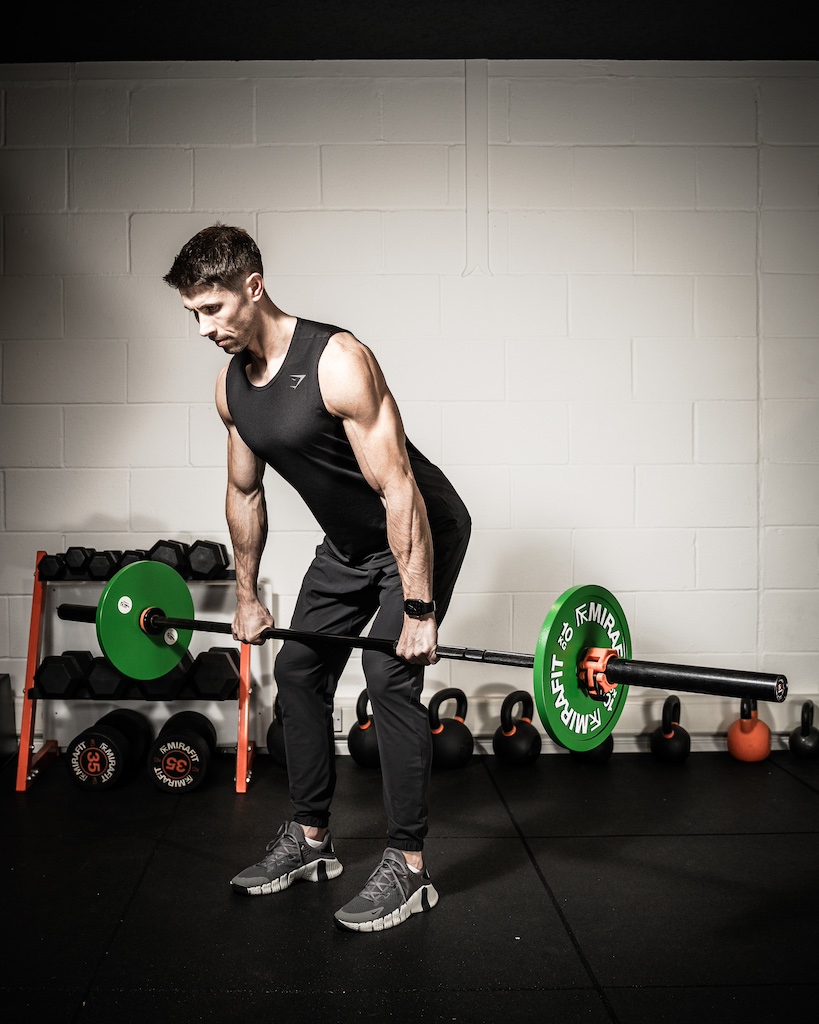
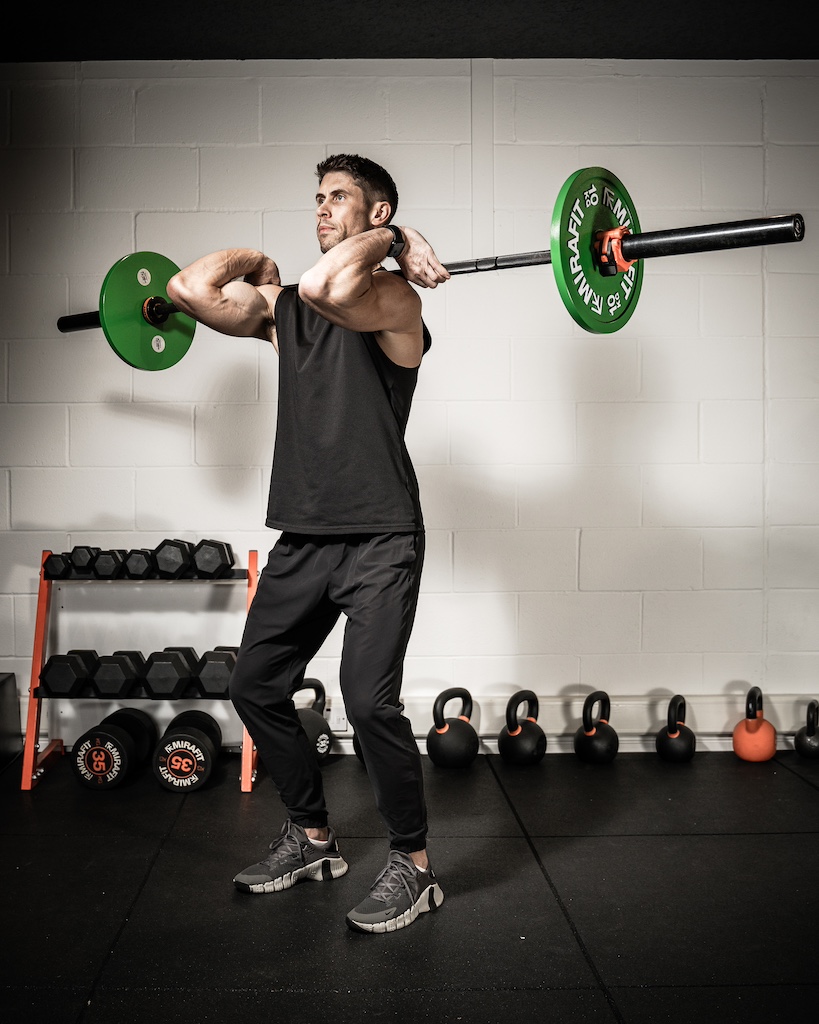
1. Hang power clean x 6-8 reps
- Stand with feet hip-width apart, grip the barbell with hands slightly wider than shoulder-width, and position the bar over the mid-foot
- Bend your knees and hips to lower into a squat position, keeping your back straight and chest up
- Explode upward by extending your hips and knees, pulling the barbell up along your body
- As the bar passes your knees, shrug your shoulders and pull your elbows high and out
- As the bar reaches chest height, quickly rotate your elbows under the bar to catch it on your shoulders, then stand up straight, securing the bar in a front rack position with knees and hips fully extended
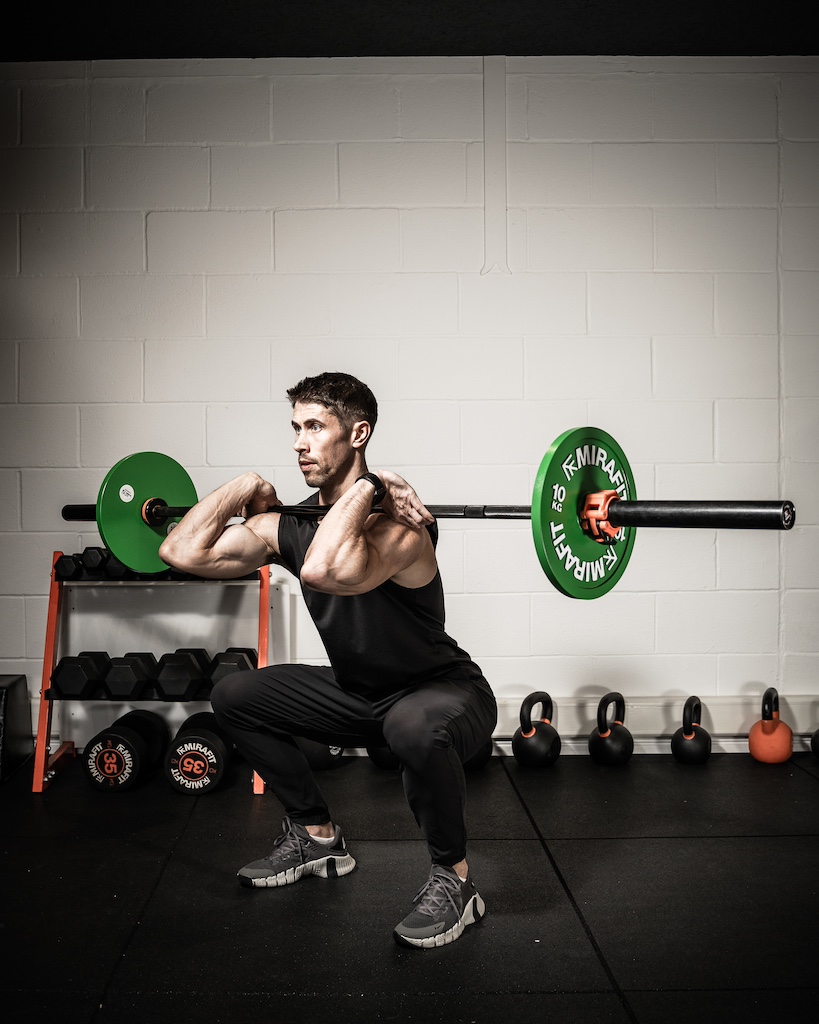
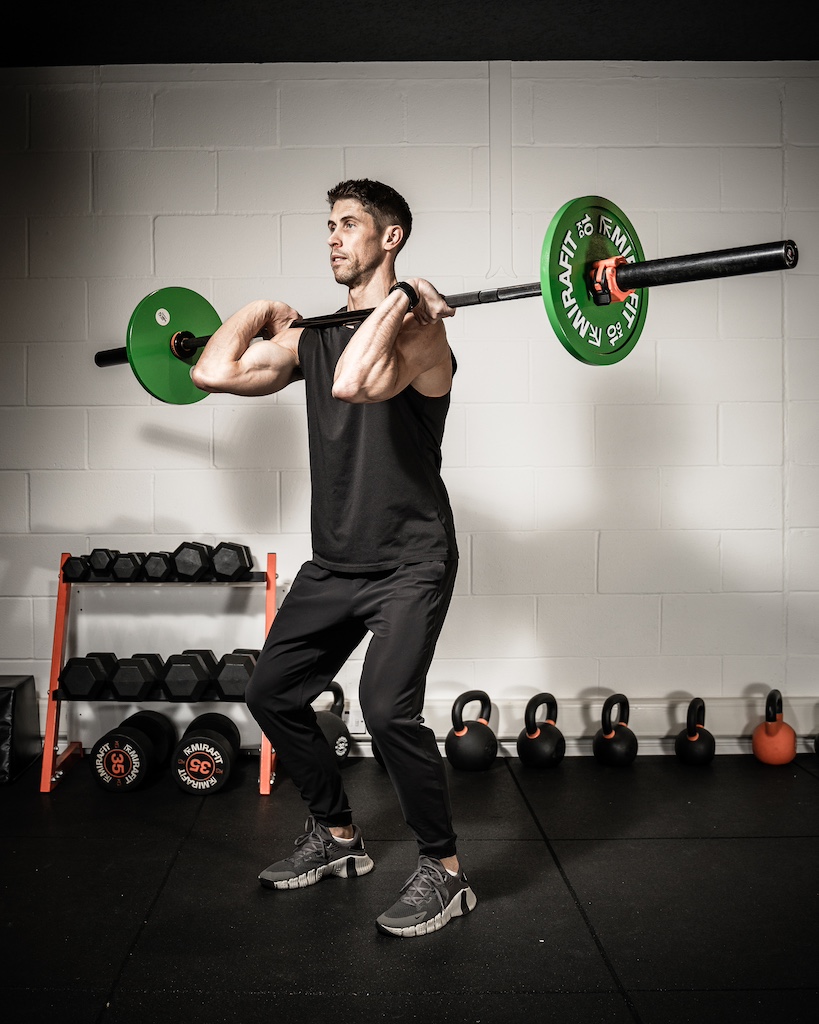
2. Front squat x 6-8 reps
- Stand with feet shoulder-width apart and toes slightly pointed out
- Position the barbell on your front shoulders, securing it with either a clean grip (fingers under the bar, elbows high) or crossed-arm grip
- Keep your chest up and engage your core
- Bend your knees and hips to lower into a squat, keeping your back straight and elbows up to maintain the barbell’s position
- Lower until your thighs are at least parallel to the ground, ensuring your knees track over your toes
- Push through your heels to stand back up, extending your knees and hips while keeping your chest up and elbows high
- Return to the starting position with controlled movement


3. Push press x 6-8 reps
- Stand with feet shoulder-width apart, holding the barbell at shoulder level with palms facing forward and elbows slightly in front of the bar
- Engage your core and keep your chest up
- Slightly bend your knees and hips, lowering into a quarter squat while keeping your torso upright. This dip should be quick and controlled
- Explosively extend your knees and hips, driving the barbell overhead by using the momentum from your lower body
- Press the barbell up until your arms are fully extended, and lock out your elbows at the top
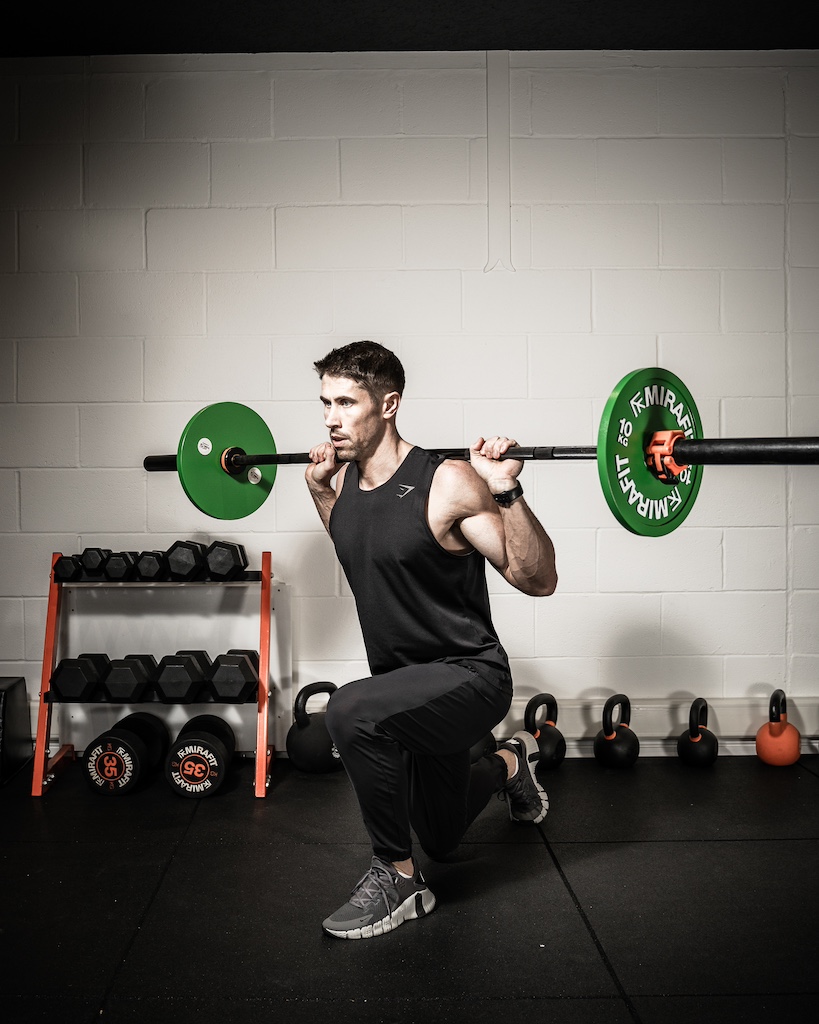
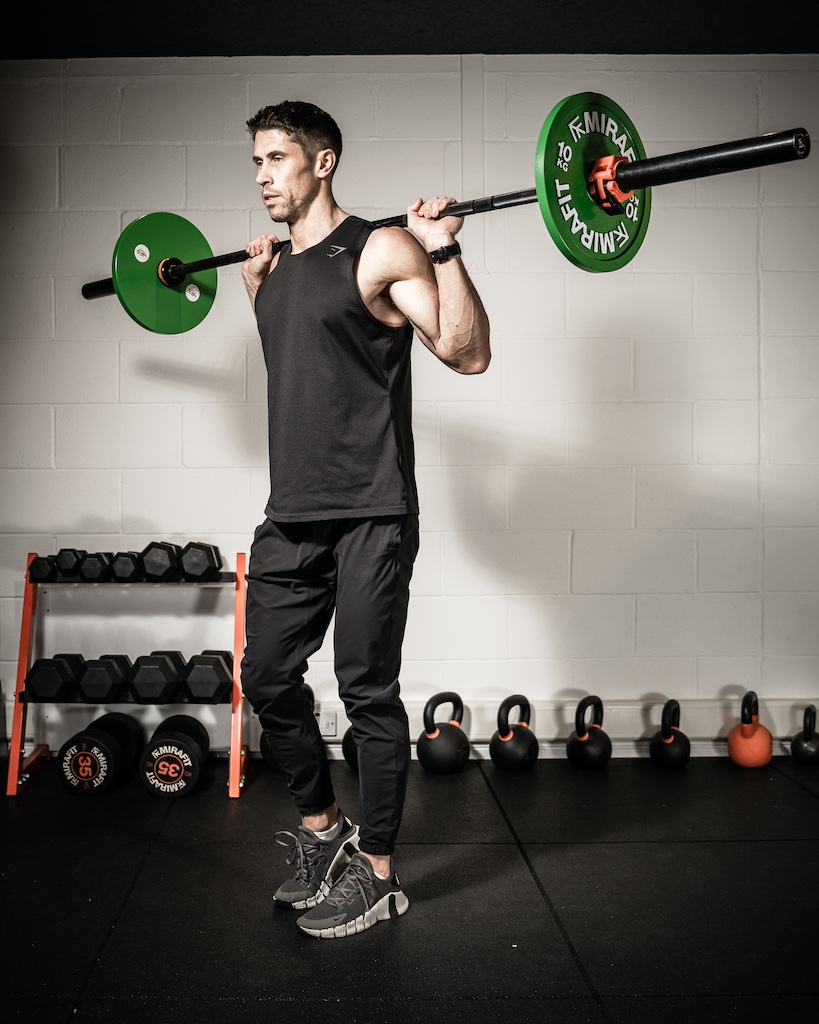
4. Reverse lunge x 6-8 reps
- Stand with feet hip-width apart, holding the barbell across your upper back with a firm grip and engaged core
- Step one foot back into a lunge, lowering your hips until both knees are bent at 90-degree angles. Keep your front knee over your ankle and your torso upright
- Push through the heel of your front foot to rise back up, bringing your back foot forward to return to the starting position
- Repeat on the other side
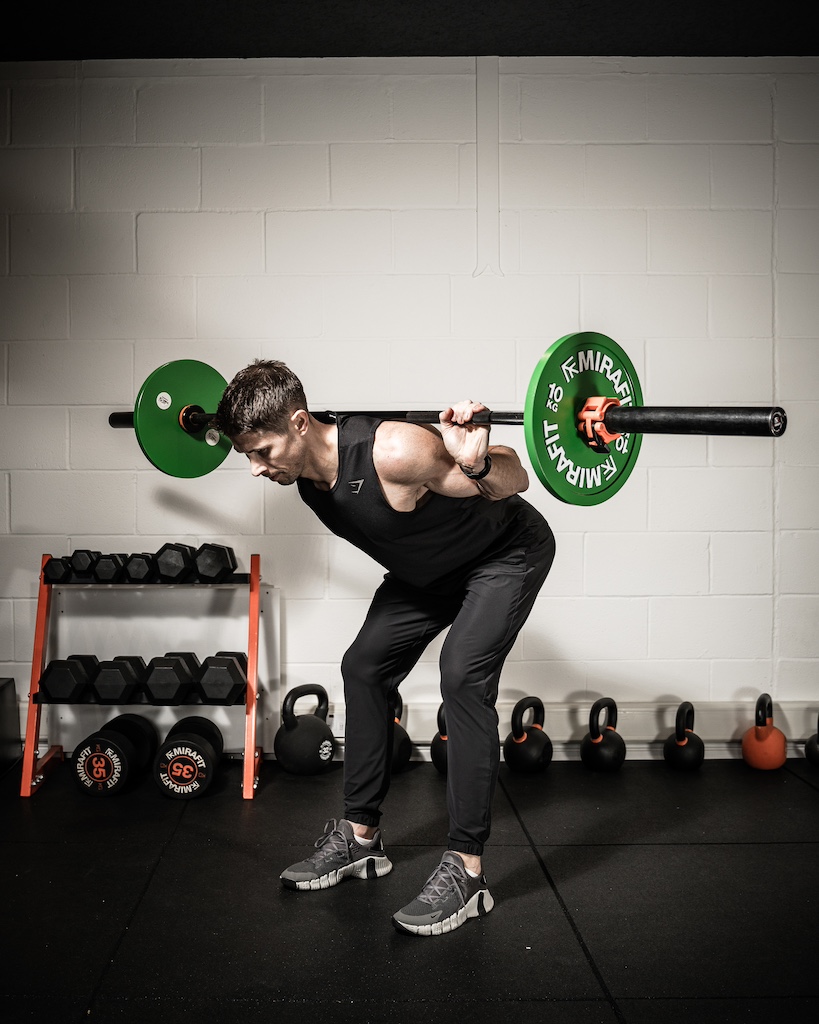
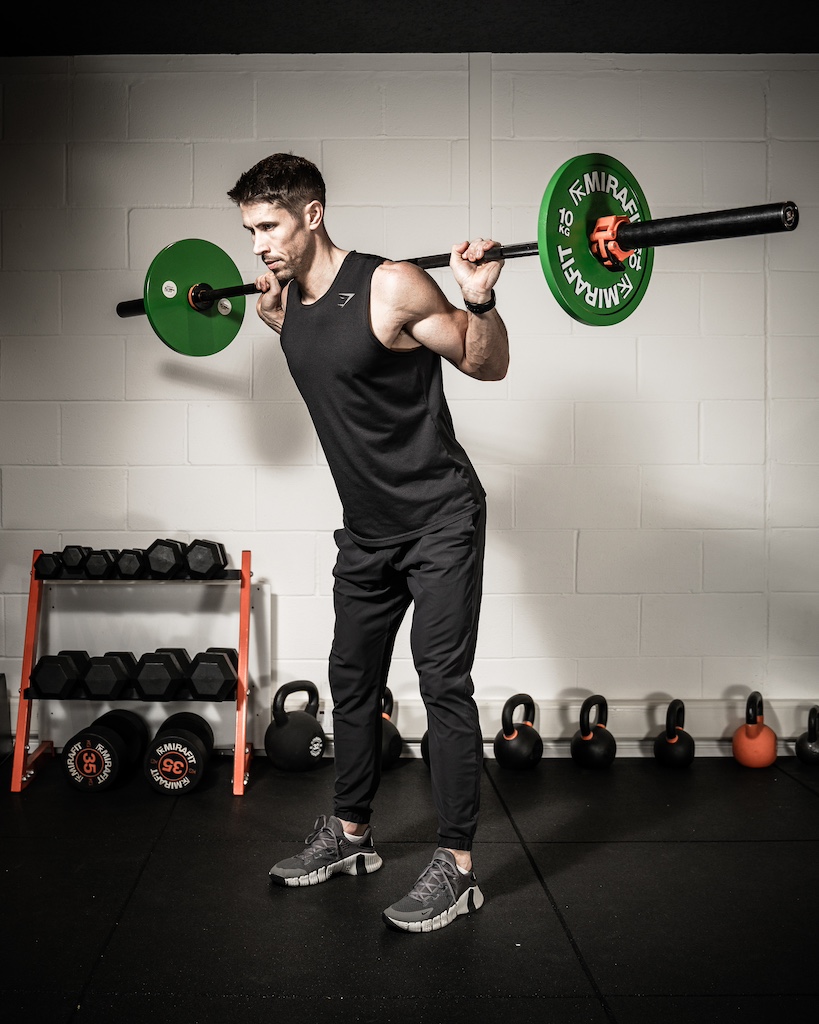
5. Good morning x 6-8 reps
- Stand with feet shoulder-width apart, holding the barbell across your upper back with a firm grip. Keep your chest up, back straight, and knees slightly bent
- Hinge at the hips to bend forward, lowering your torso while keeping your back flat and knees slightly bent
- Continue until your torso is nearly parallel to the ground
- Engage your glutes and hamstrings to lift your torso back up to the starting position, maintaining a straight back throughout the movement
Dumbbell metabolic resistance training workout
- Complete all exercises back-to-back with less than 15 seconds rest between each
- Rest for 2 minutes at the end of each circuit
- Repeat up to 3-5 times for your full workout
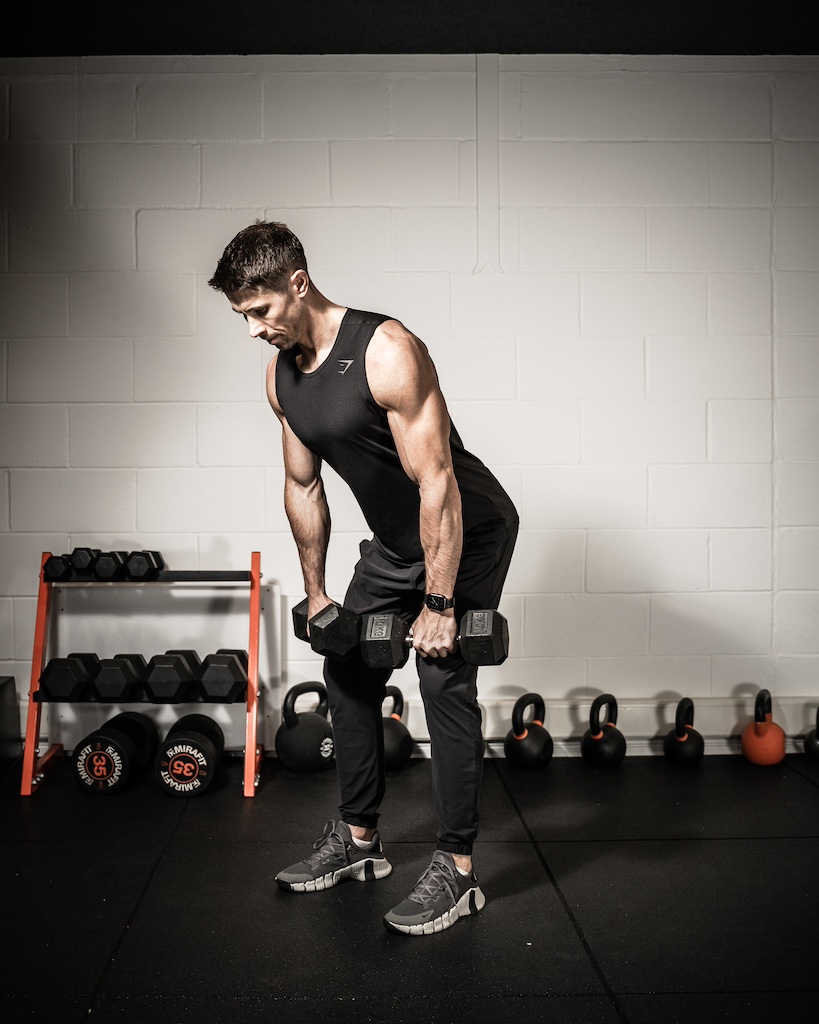

1. Clean x 6-8 reps
- Stand with feet hip-width apart, holding a dumbbell in each hand at your sides. Keep your chest up and core engaged
- Bend your knees and hips to lower into a squat position
- Explode upward by extending your hips and knees while simultaneously pulling the dumbbells up along your body, leading with your elbows
- As the dumbbells reach shoulder height, quickly rotate your elbows under them to catch them on your shoulders
- Stand up straight, fully extending your knees and hips with the dumbbells in the front rack position
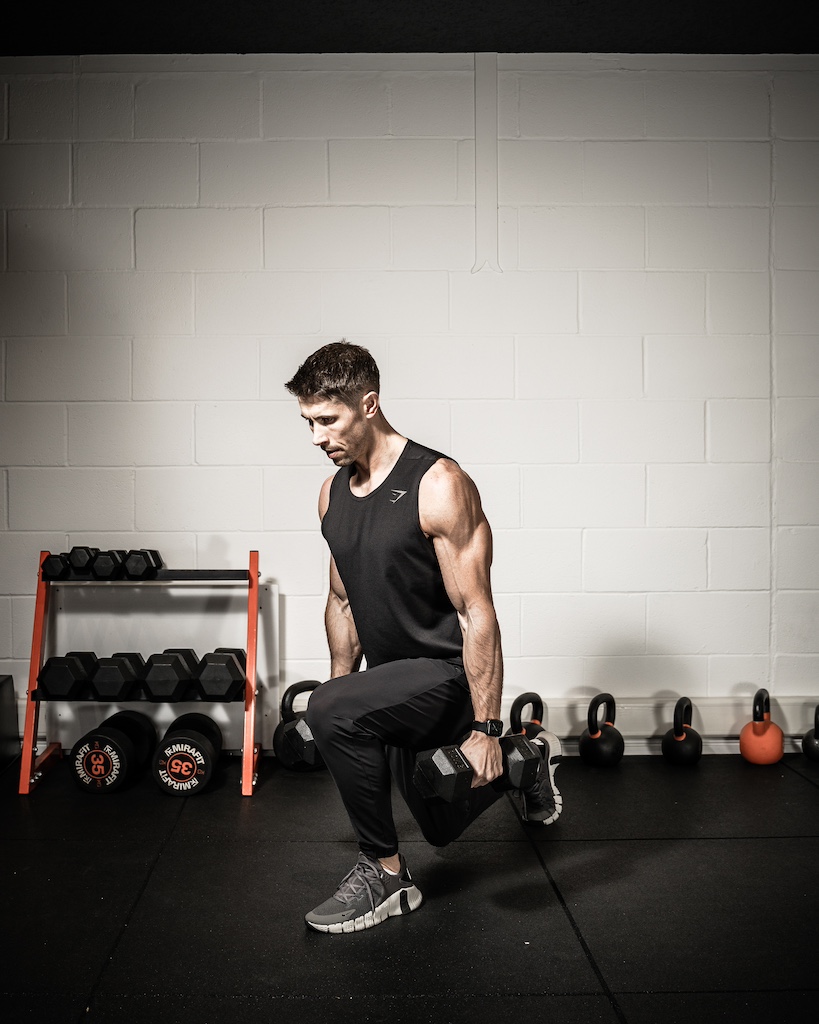

2. Reverse lunge x 6-8 reps
- Stand with feet hip-width apart, holding a dumbbell in each hand at your sides with arms relaxed. Engage your core and keep your chest up
- Step one foot back into a lunge, lowering your hips until both knees are bent at 90-degree angles. Ensure your front knee is directly above your ankle and your torso remains upright
- Push through the heel of your front foot to rise back up, bringing your back foot forward to return to the starting position
- Repeat on the other side
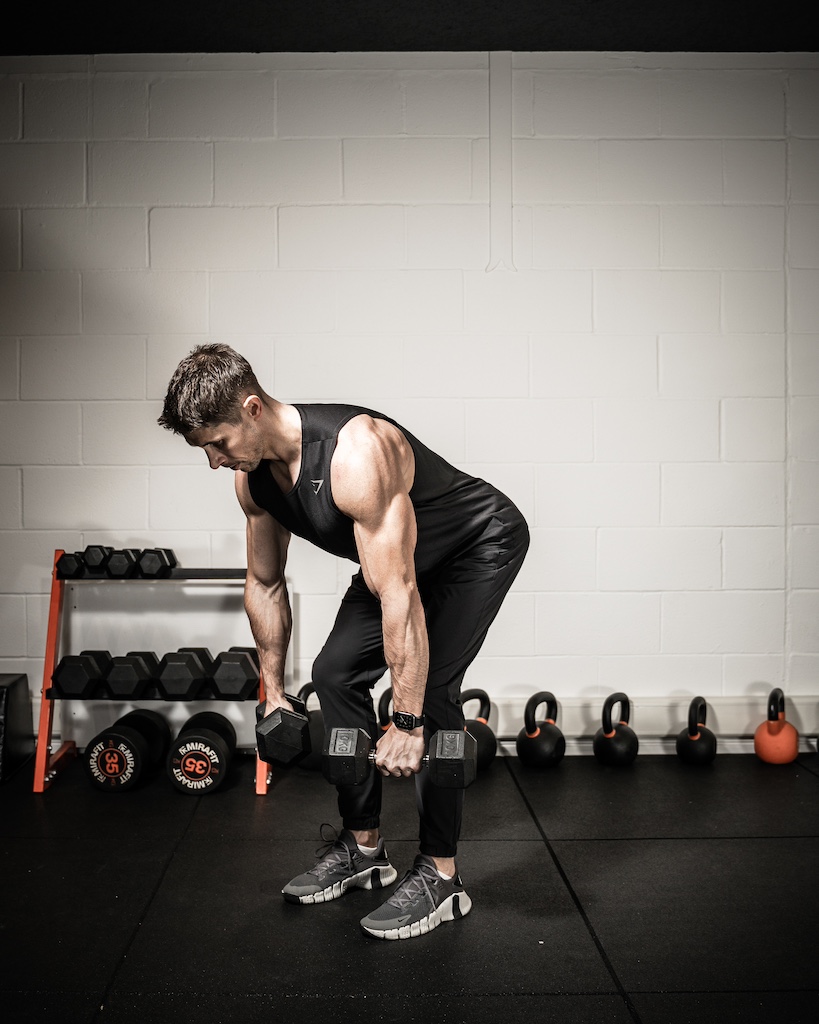
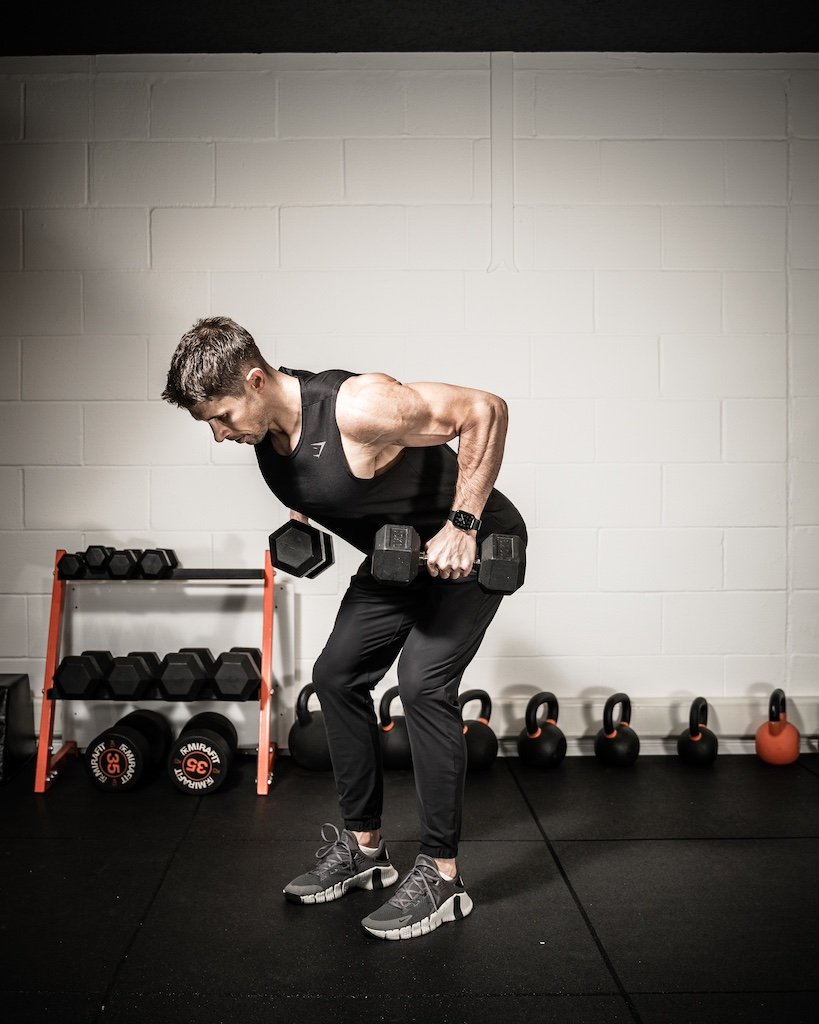
3. Bent-over row x 6-8 reps
- Stand with feet shoulder-width apart, holding a dumbbell in each hand with palms facing inward
- Hinge at your hips to bend forward until your torso is nearly parallel to the ground, keeping your back straight and knees slightly bent
- Pull the dumbbells towards your hips by bending your elbows and squeezing your shoulder blades together. Keep your elbows close to your body as you lift the dumbbells
- Slowly lower the dumbbells back down to the starting position with control, maintaining a straight back throughout the movement
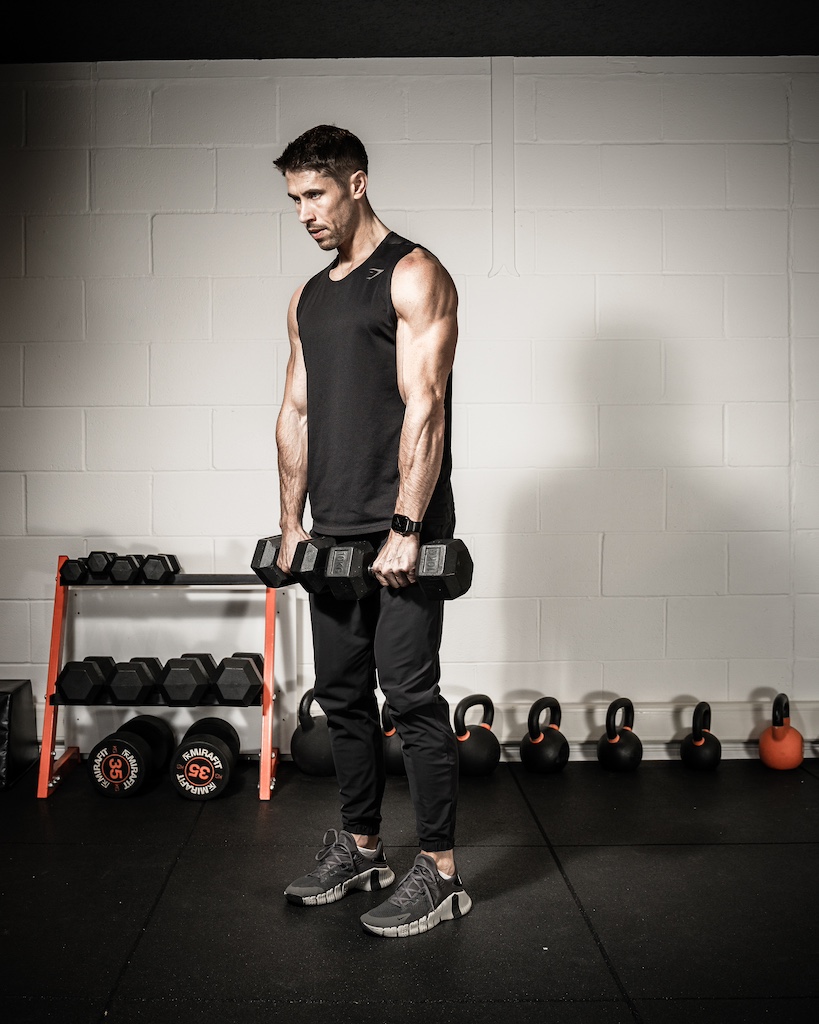
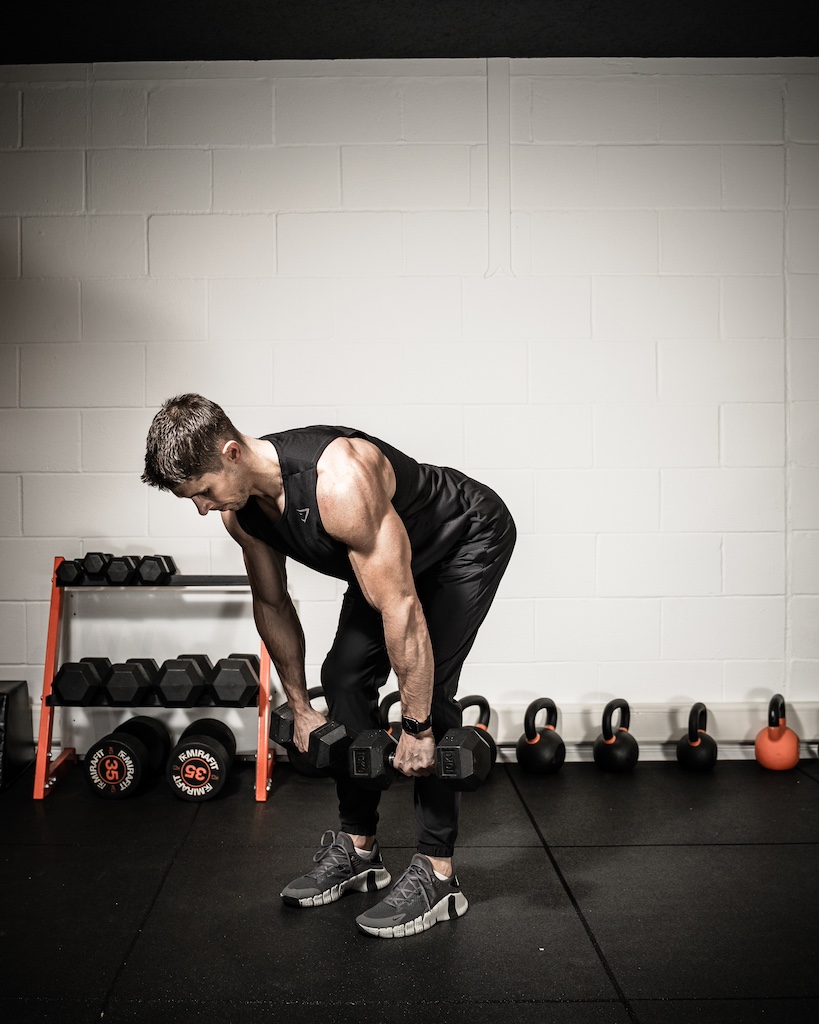
4. Romanian deadlift x 6-8 reps
- Stand with feet hip-width apart, holding a dumbbell in each hand in front of your thighs, palms facing your body. Engage your core and keep your chest up
- Hinge at your hips to lower the dumbbells towards the ground while keeping your back straight
- Allow a slight bend in your knees as you lower the dumbbells, feeling a stretch in your hamstrings
- Push through your heels and squeeze your glutes to return to the starting position, maintaining a straight back throughout the movement
- Focus on using your hamstrings and glutes to lift the dumbbells back up
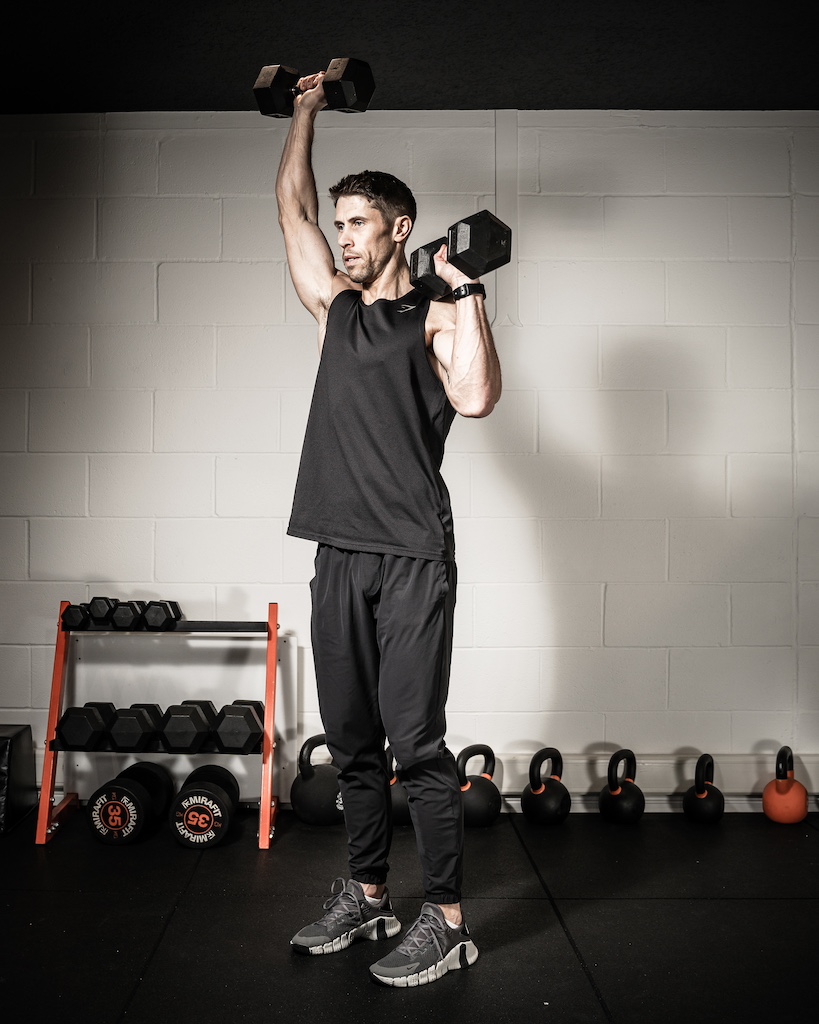
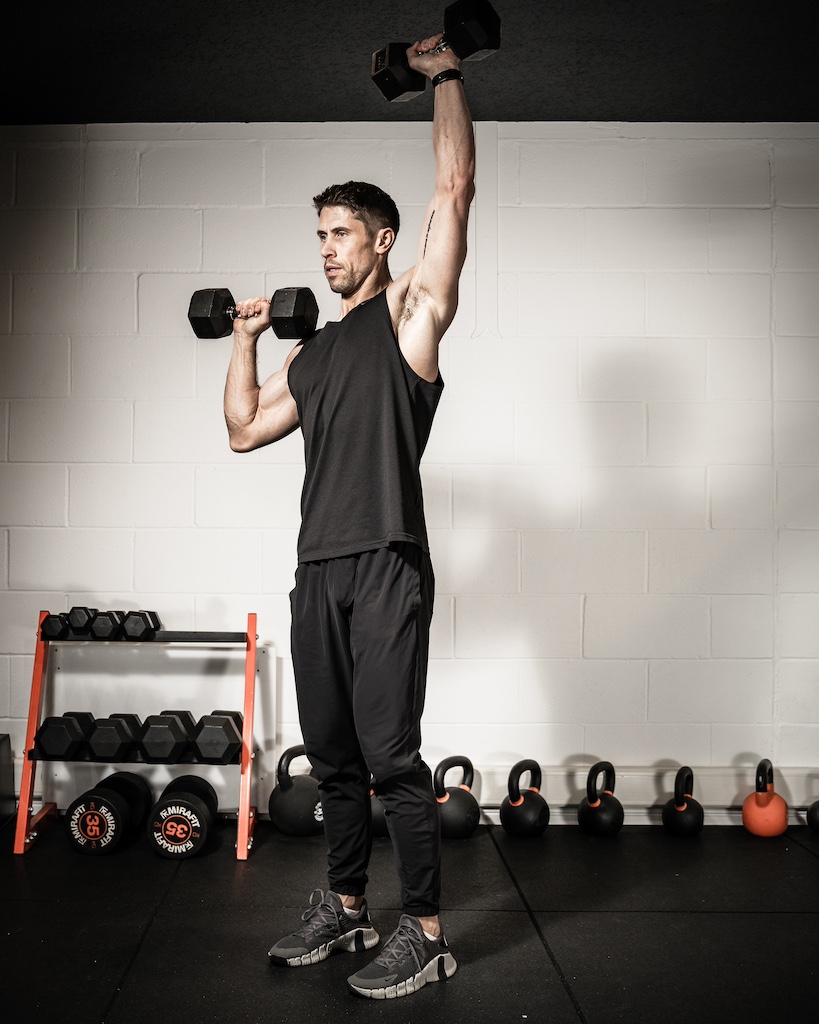
5. Alternating shoulder press x 6-8 reps
- Sit on a bench with back support, holding a dumbbell in each hand at shoulder height with palms facing forward. Keep your core engaged and feet flat on the floor
- Extend one arm to press the dumbbell overhead while keeping the other arm at shoulder height
- Straighten your arm fully at the top, without locking your elbow
- Slowly lower the pressed dumbbell back to shoulder height while simultaneously pressing the other dumbbell overhead
- Alternate pressing arms while maintaining control and stability through your core







